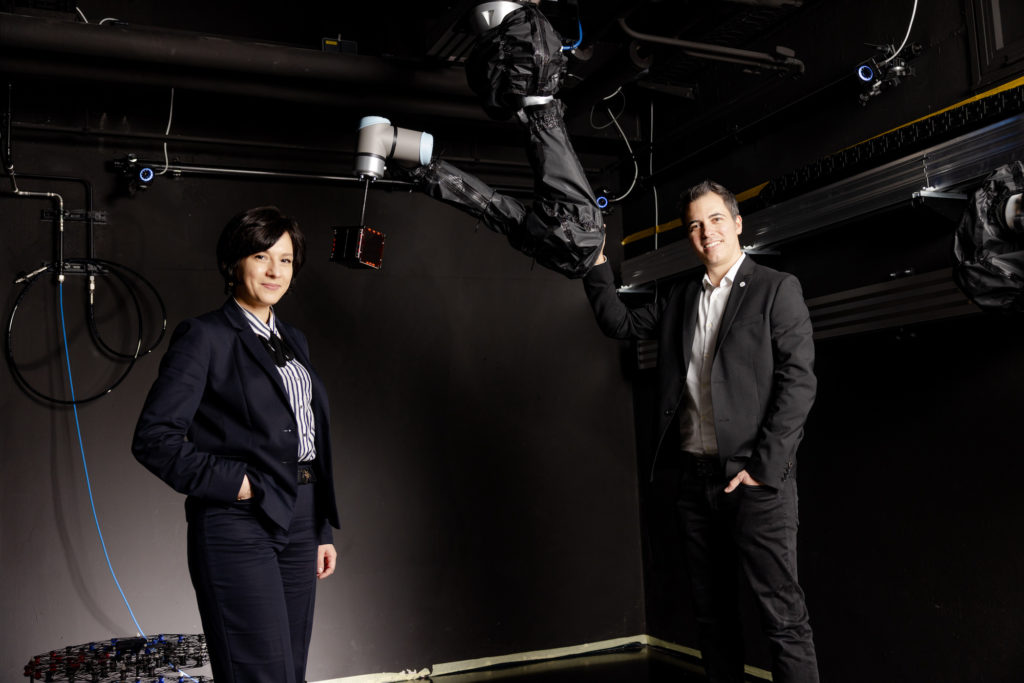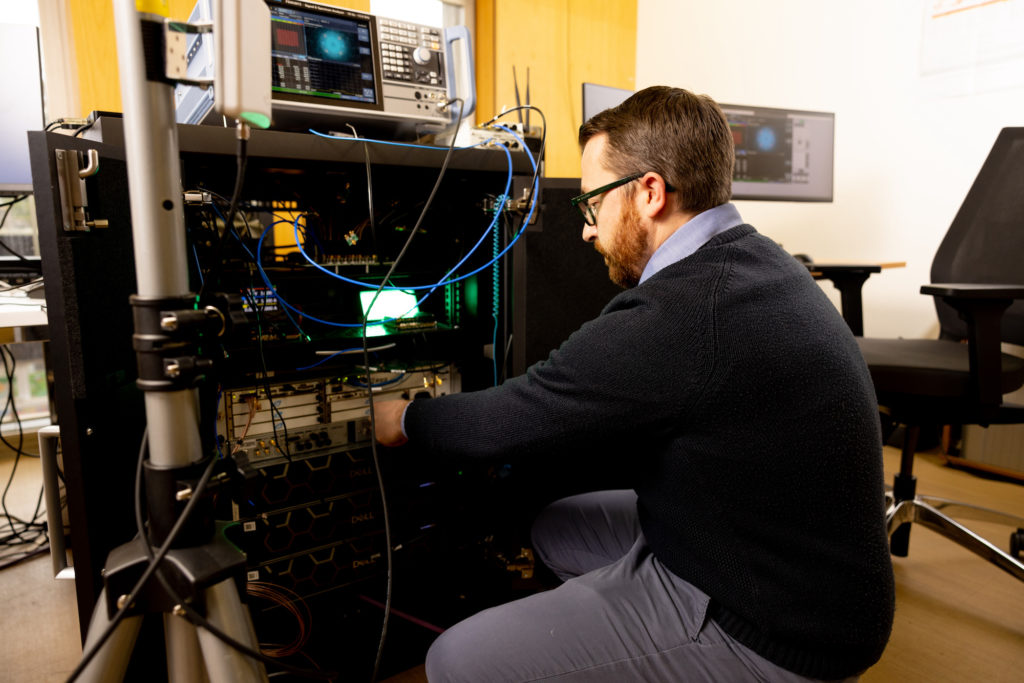The laboratories at SnT provide the ideal simulated environments for researchers to test their work. This year, SnT added two unique laboratories to its space research facilities. As space is a strategic research area at SnT, our researchers regularly work on key projects with entities and partner companies within the sector, such as the European Space Agency, the Luxembourg Space Agency, SES, and many others. More specifically, we work in the areas of satellite communications, small satellites (including CubeSats), nanosatellites, space robotics, space systems engineering, and computer vision applied to space. The two new laboratories join five existing space facilities: the CubeSatLab, the LunaLab, the Concurrent Design Facility, the SatComLab, and the CommLab.
The new Zero-G Lab is designed to allow students and researchers to test the movement of in-orbit robotics, satellites and other spacecraft in a micro-gravity environment – similar in concept to an air hockey platform. On Earth, we take gravity for granted, but moving in its absence presents a number of challenges for in-orbit operations. For instance, a small push between two orbiting systems could make one or both tumble and become out of control. Seeing how spacecraft and orbital robotics can be controlled or perform with decoupled systems in this environment provides students and researchers with the unique chance of understanding and forecasting their behaviour in space.
This environment provides students and researchers with the unique chance of understanding and forecasting their behaviour in space.
A unique on-ground experimental facility for close-to-real tests of scenarios such as satellite and other spacecraft rendezvous, the Zero-G lab is also used for partnership projects. A recent example is the FNR Bridges HELEN initiative in partnership with Spacety to investigate space debris removal with CubeSats, in which the lab will allow the related Active Space Debris Removal CubeSat to reach a technology readiness level of up to six.

“Current typical communications in space are point-to-point, meaning they take place between two parties – like a telephone call. But in the upcoming lunar exploration scenarios,will need to communicate with each other”
Jorge Querol, SnT Tweet
When it comes to satellite communications, some of our researchers are now focusing on how future missions on the Moon communicate with each other, alongside ground stations on Earth. “Current typical communications in space are point-to-point, meaning they take place between two parties – like a telephone call. But in the upcoming lunar exploration scenarios, multiple crewed and uncrewed missions – including a large number of robots and rovers – will need to communicate with each other,” says Dr. Jorge Querol, head of the SatComLab at SnT.
Enter the increased capabilities offered by 5G technology. For missions on the Moon, for example, this means taking advantage of this cutting-edge technical framework for lunar rover control, local communications, as well as to transmit a higher amount of data (with lower latency) back to Earth. That is exactly one of the use cases that the newly launched 5G-Spacelab will investigate.
An interdisciplinary space communications and control emulation platform in one, the 5G-Spacelab combines the power of the CubeSatLab, the Concurrent Design Facility, the LunaLab and the SatComLab into one multifunctional control room. Its main purpose is to test 5G communications in space, both in Earth–orbiting satellite communications as well as Earth-Moon communications scenarios.
